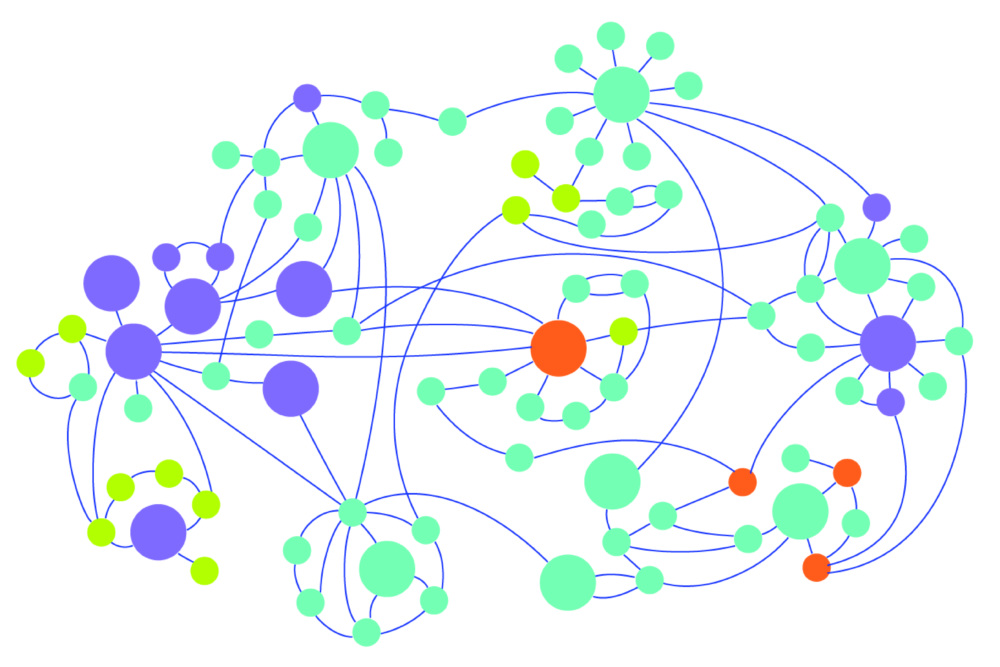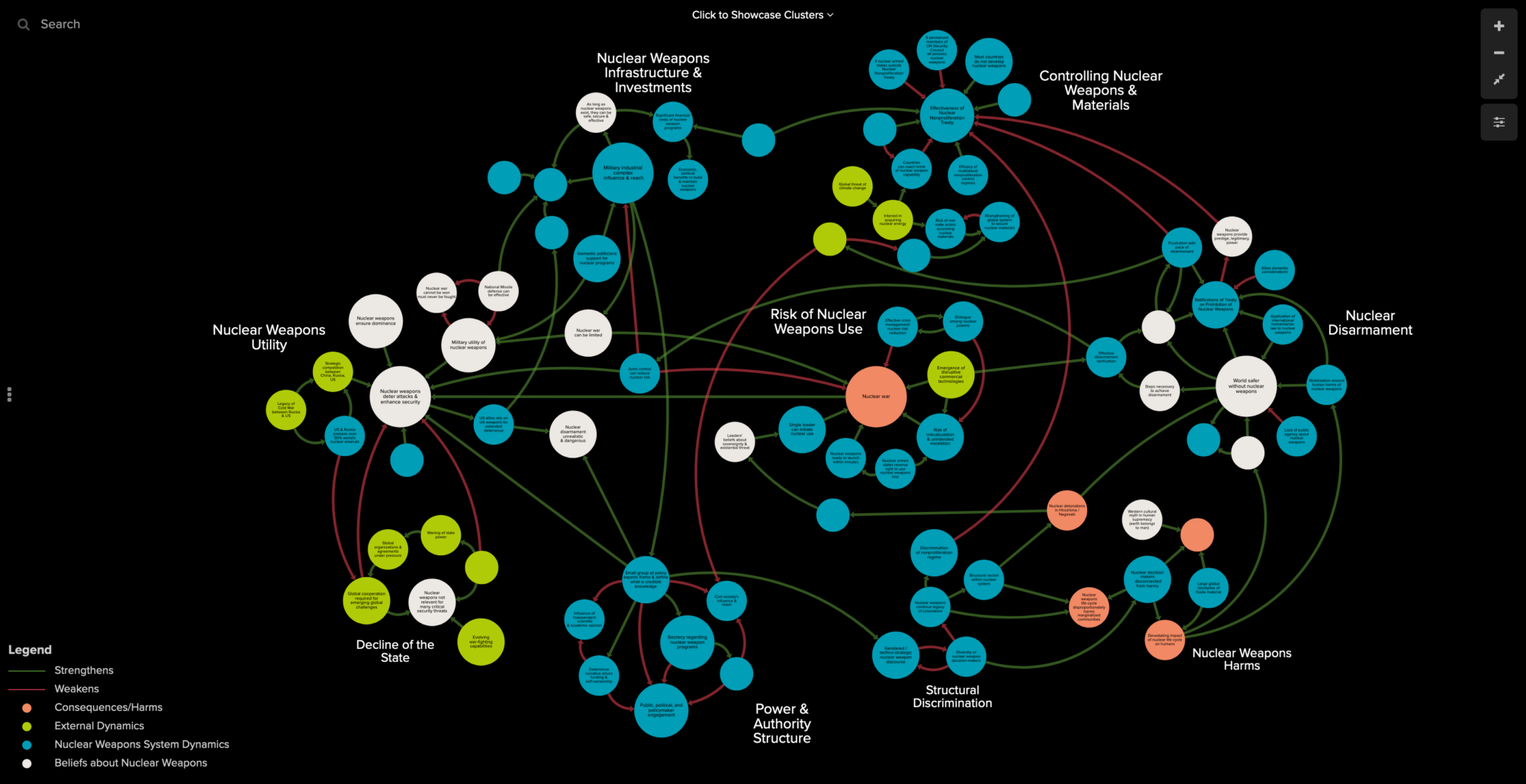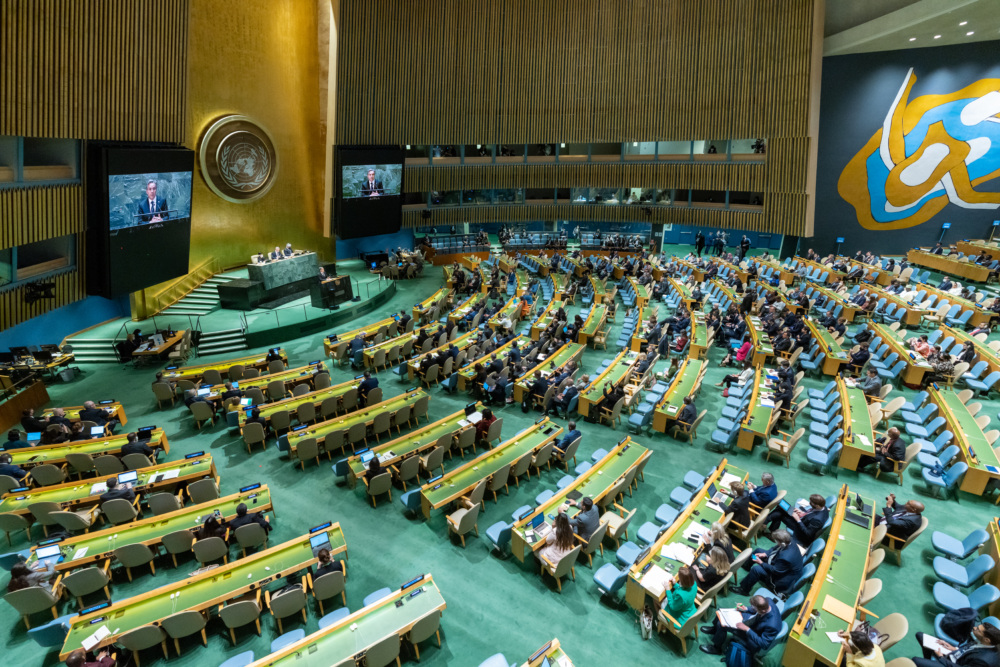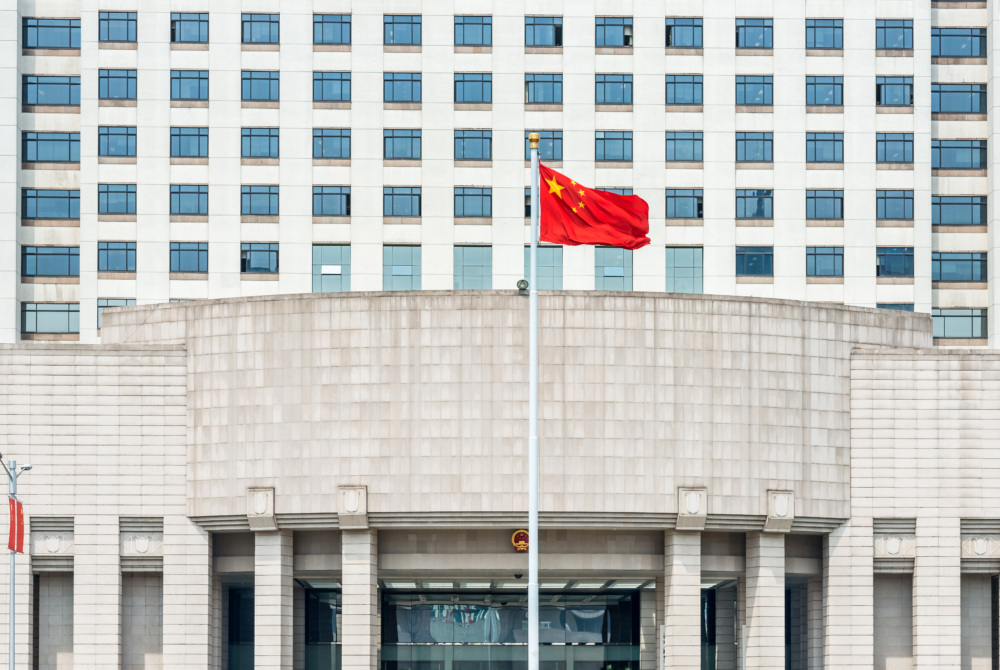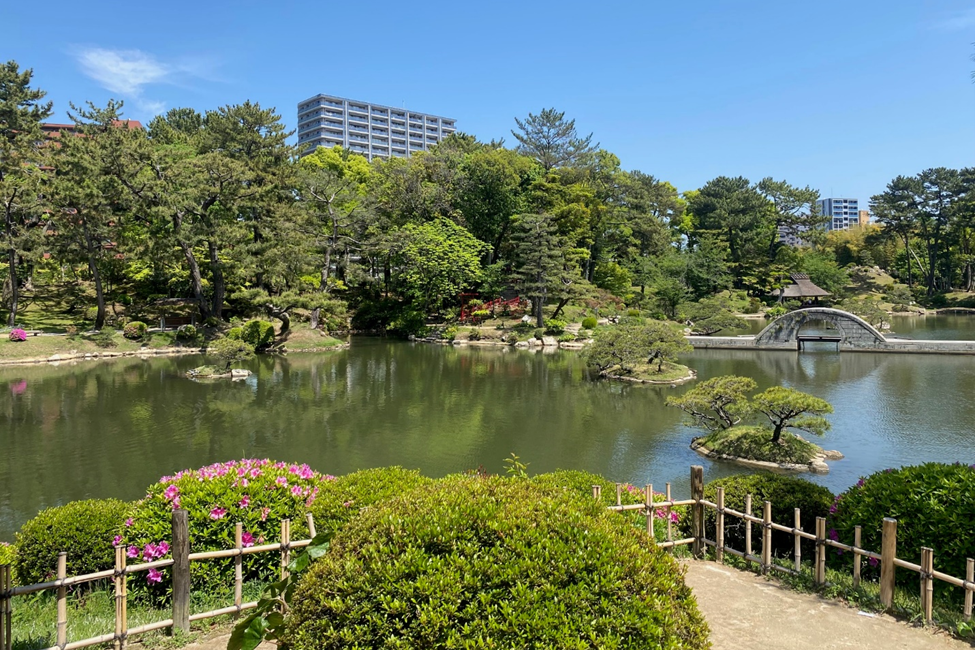
Ananya Agustin Malhotra
Program Officer, Global Nuclear Policy Program
Atomic Pulse
In 2019, the Nuclear Threat Initiative (NTI) co-founded Horizon 2045, a collaborative effort with N Square and the Center for Complexity at the Rhode Island School of Design (RISD) to work to bring about an end to the nuclear weapons century that began with the development, testing, and use of nuclear weapons in 1945. As described in the Horizon 2045 theory of change, the effort “was designed to challenge conventional wisdom about the efficacy of nuclear weapons as tools for maintaining global security” and to reimagine global security in a world where nuclear weapons no longer threaten humanity’s future.
This is the first in a series of blog posts about Horizon 2045’s innovative approach to thinking about nuclear disarmament. In this installment, we look at the systems thinking approach that drives Horizon 2045’s theory of change and guides its project work.
Policy problems in today’s interconnected world are highly complex. The “wicked” problems facing humanity—like climate change, pandemics, and the risk of nuclear war—comprise a global phenomenon some are calling the “polycrisis.” These intersecting systemic risks require structural solutions that address a range of complex social, political, economic, and technological challenges.
To confront this challenge, some policymakers and thought-leaders are working to better account for complexity in their problem-solving by incorporating a set of processes, methods, and practices known as systems thinking. This approach aims to bring about systems change by identifying the structures, historical patterns, and behaviors that undergird policy problems and shifting the conditions that hold these structures in place.
“By studying a system as a whole,” said Isabelle Williams, team lead for Horizon 2045 at NTI, “we can identify key leverage points where a small change—or series of changes—could catalyze a broader shift in the system.”
The nuclear problem is a systems problem—it is a complex, multifactorial problem driven by an interplay between policies and procedures, human actions and decisions, technologies, infrastructures, incentives, and beliefs and assumptions.
Today’s global nuclear weapons system comprises overlapping dynamics related to shaping geopolitics, controlling nuclear materials, sustaining nuclear weapons infrastructure and investments, exerting power and authority, and impacting people and communities in different ways. In this context, systems thinking is a powerful tool that the Horizon 2045 team can use to untangle the threads of the nuclear web and pinpoint areas where efforts to change the status quo system will be most effective.
Horizon 2045’s emphasis on systems thinking coincides with a growing consensus that a systemic approach may be the most effective way to change thinking about nuclear weapons. A recent survey of the international nuclear policy community by Ploughshares Fund found that 71% of respondents are most excited by “challenging the status quo with longer-term, more systemic thinking.”
To better understand the complex dynamics of the nuclear system, the Horizon 2045 team developed a Nuclear Weapons System Map using causal loop diagramming, a mapping tool that helps illustrate complex systems and the relationships between their different variables.
The map depicts behaviors and dynamics perpetuating the nuclear weapons system, including:
So far, the map has helped drive Horizon 2045’s priorities and work by revealing vulnerable areas of the system that might be ripe for disruption and it has served as a foundation for discussion with different communities about how they understand and view the system.
Studying all components of the nuclear weapons system allows the Horizon 2045 team to better understand how power moves and operates within the system and how it has helped the system remain resistant to change. In the next blog post, I’ll break down the biggest takeaways and share key lessons from the mapping process. Stay tuned!
Sign up for our newsletter to get the latest on nuclear and biological threats.
As officials prepare to meet in Vienna for the 2023 PrepCom, they should consider some of the key themes that have emerged from NTI’s Global Enterprise to Strengthen Non-Proliferation and Disarmament.
Amid uncertainty around China’s expanding nuclear program and silence from Beijing about the intent behind the build-up, a new report offers details about China’s nuclear program that suggest significant implications for U.S. and global security.
"Visiting Hiroshima imparted to me a deep sense of responsibility as well as a renewed energy to work towards a world without nuclear weapons," writes Program Officer Ananya Agustin Malhotra.
